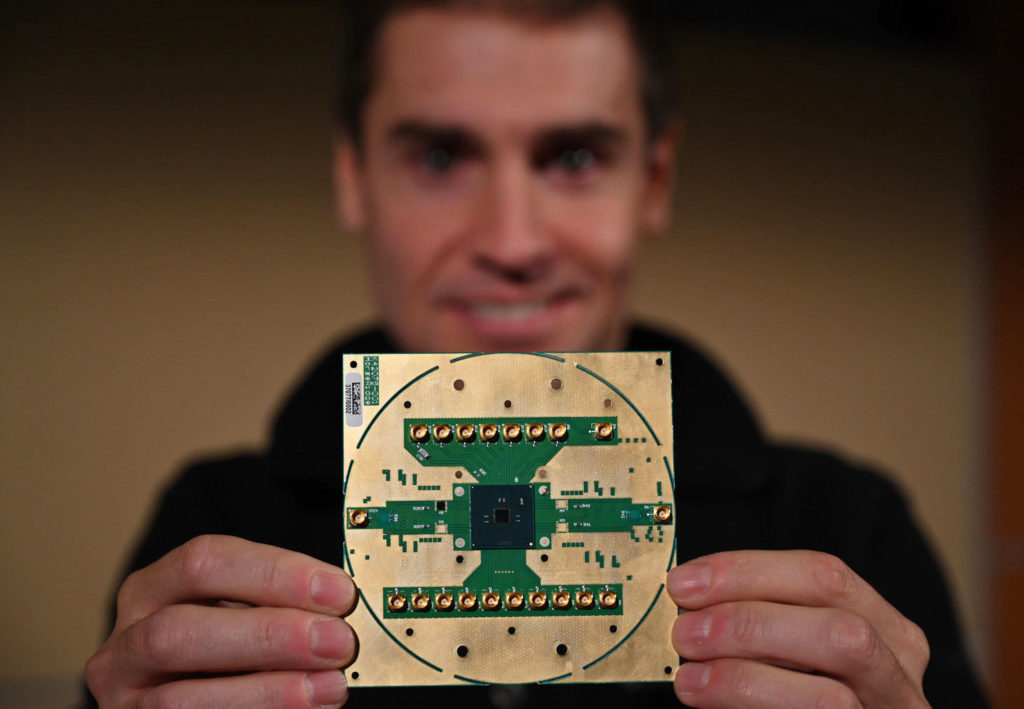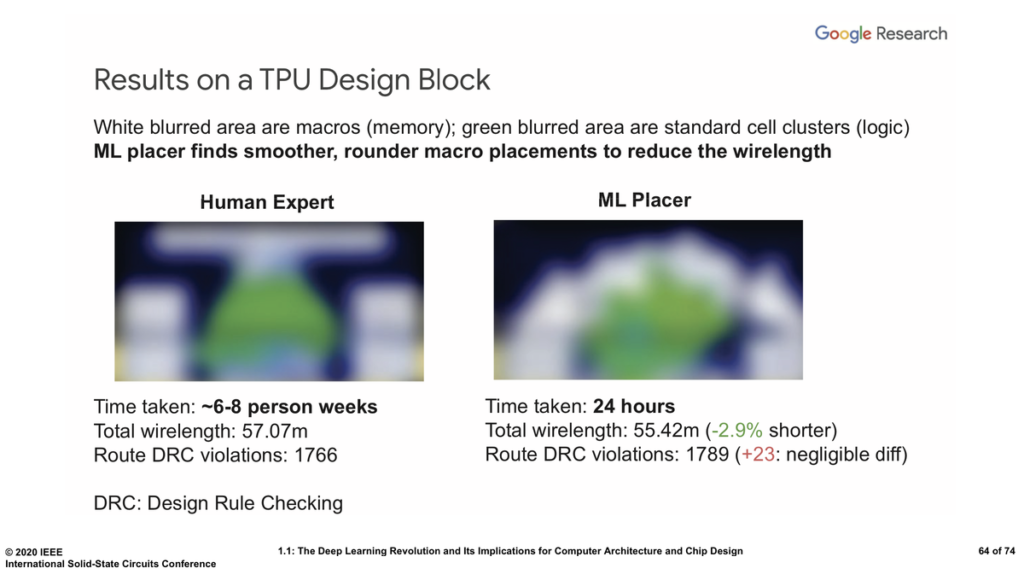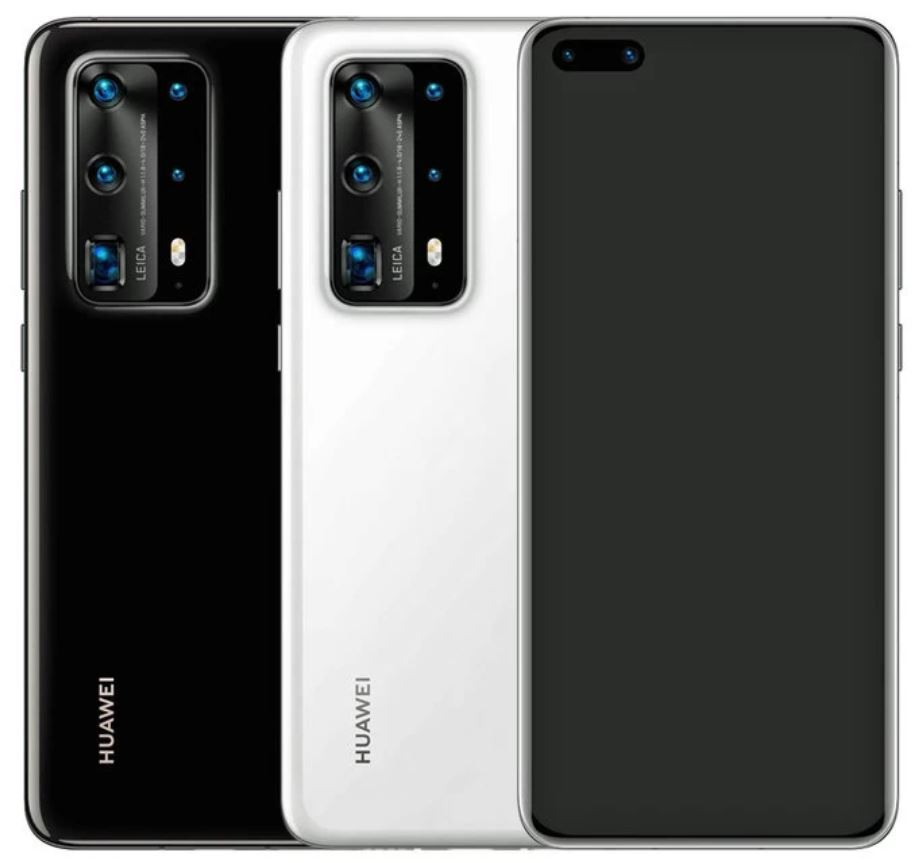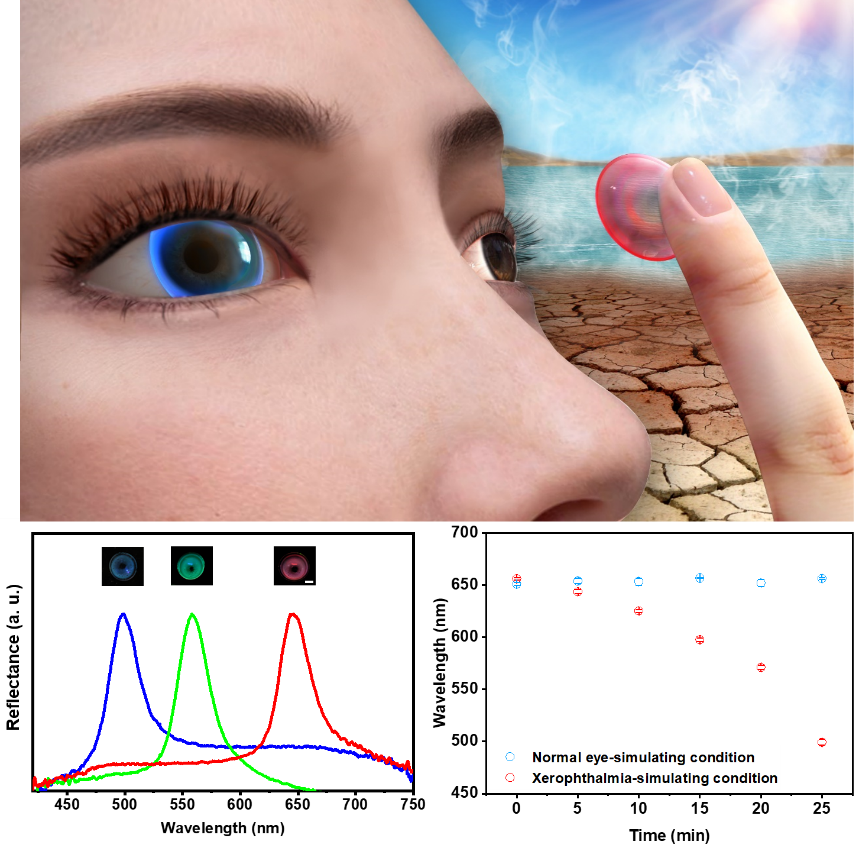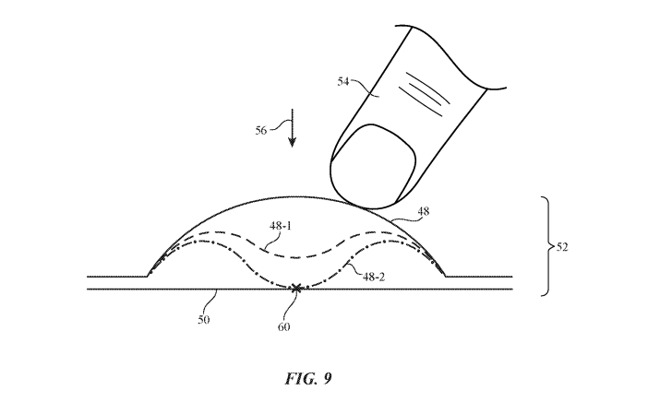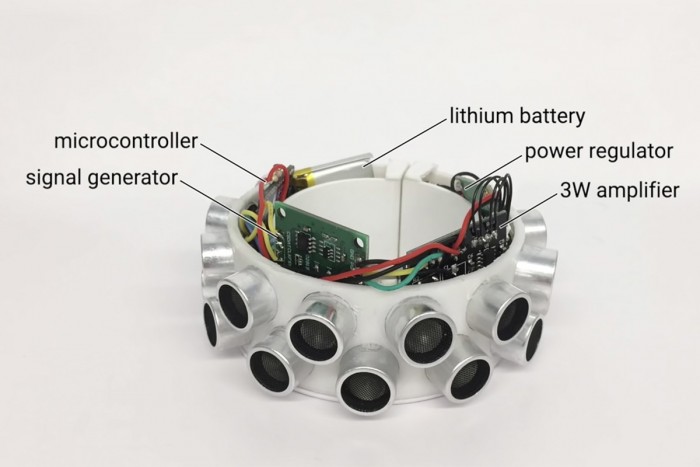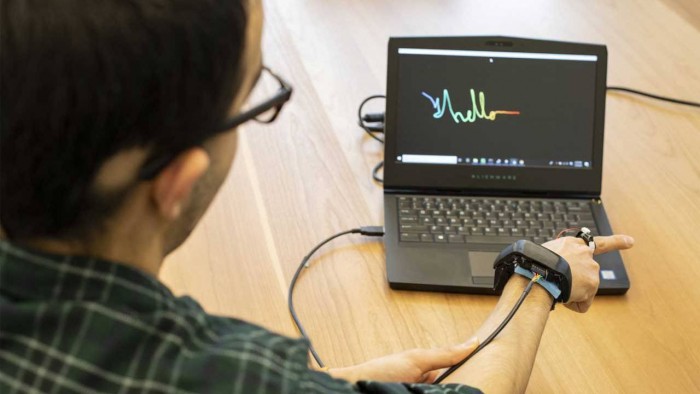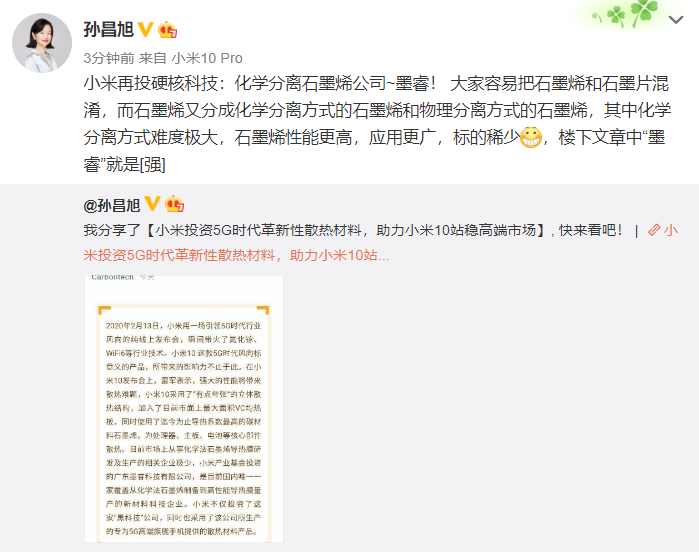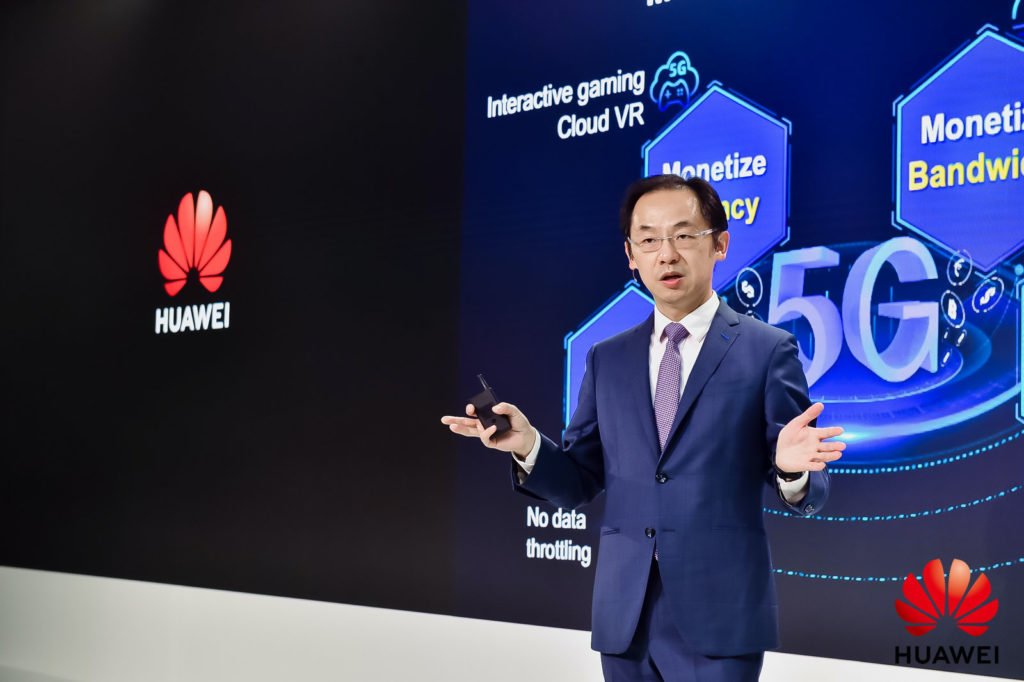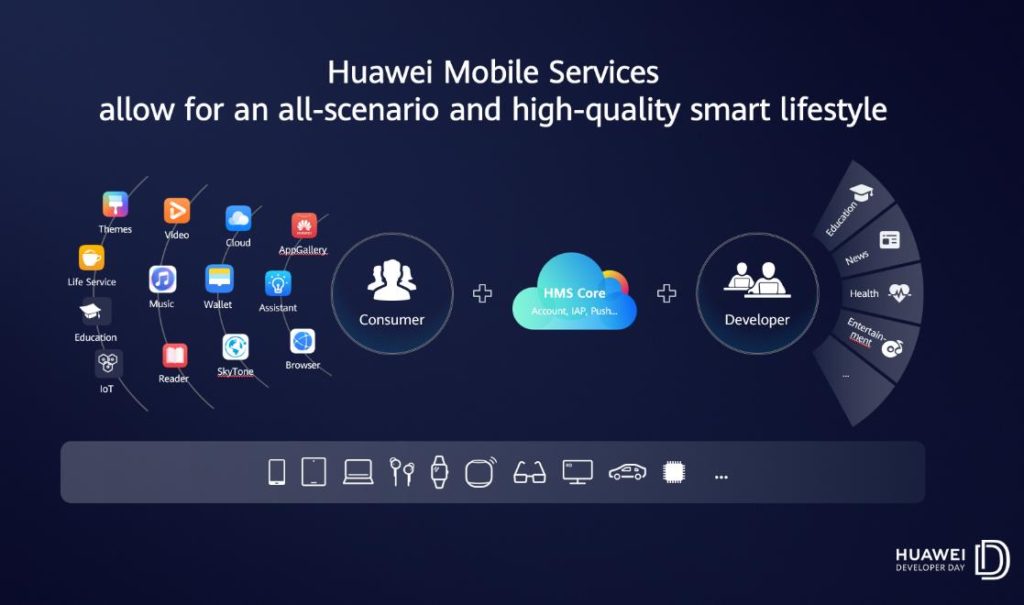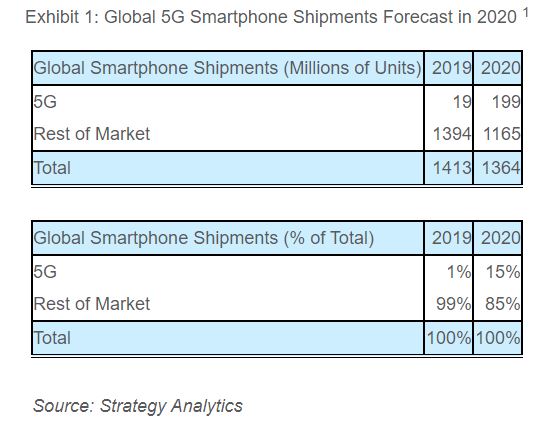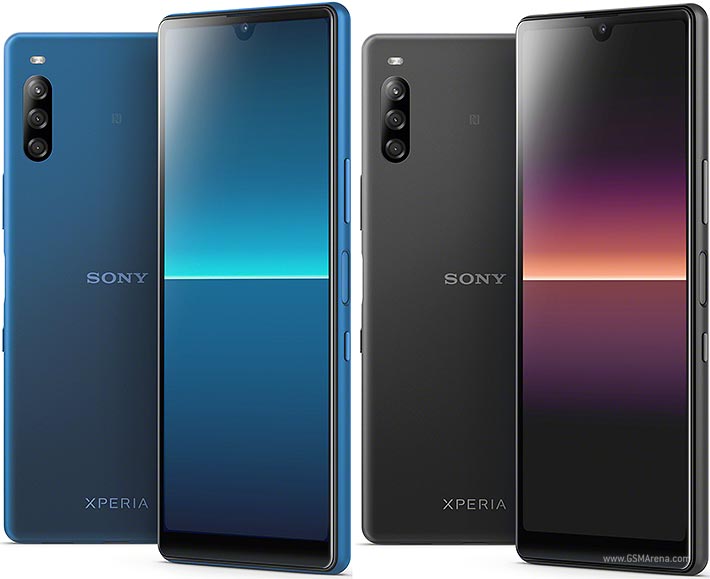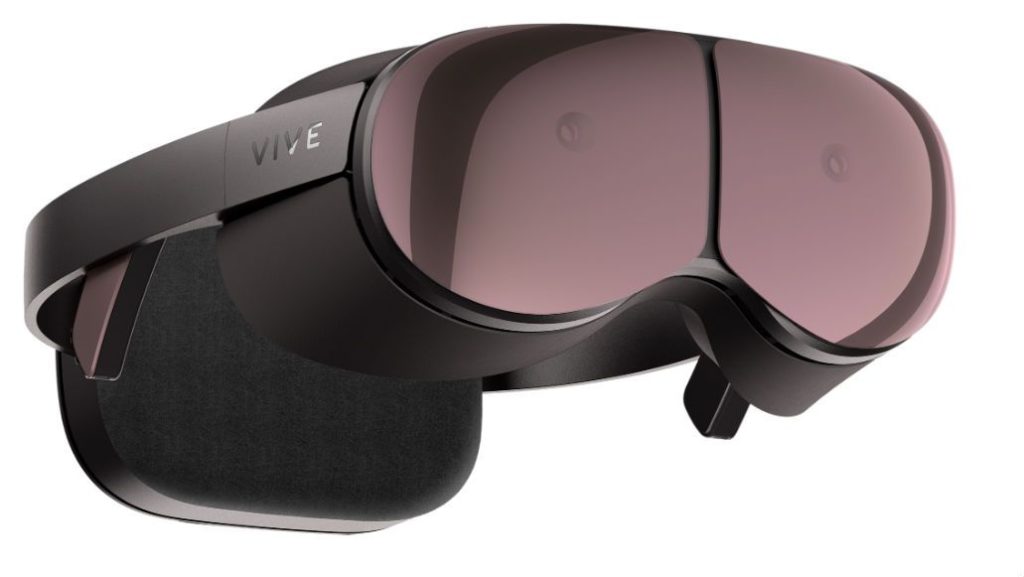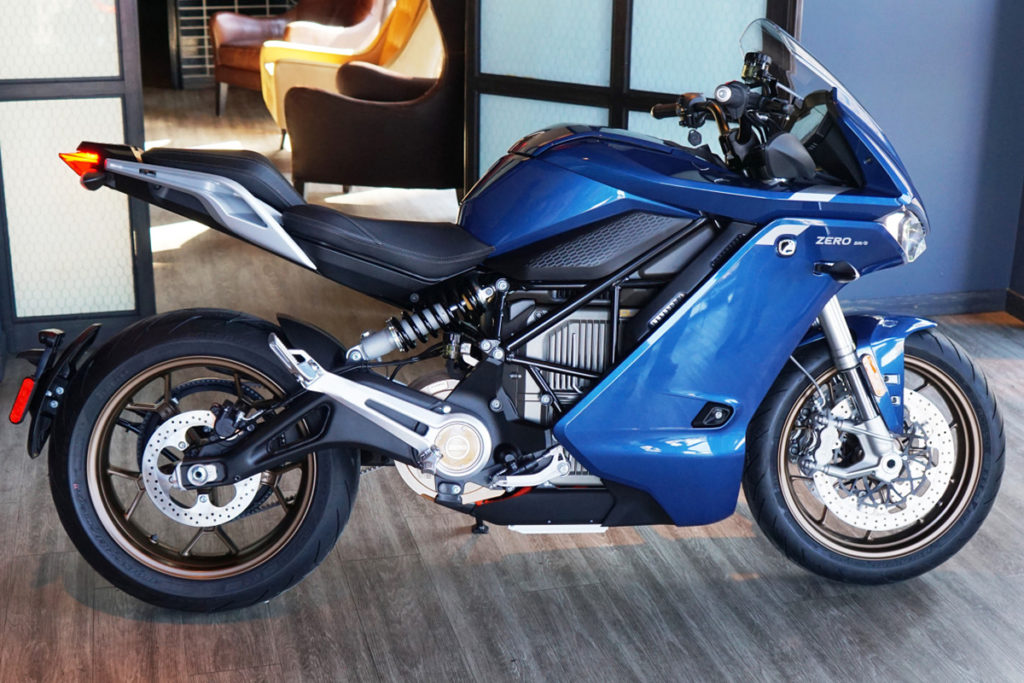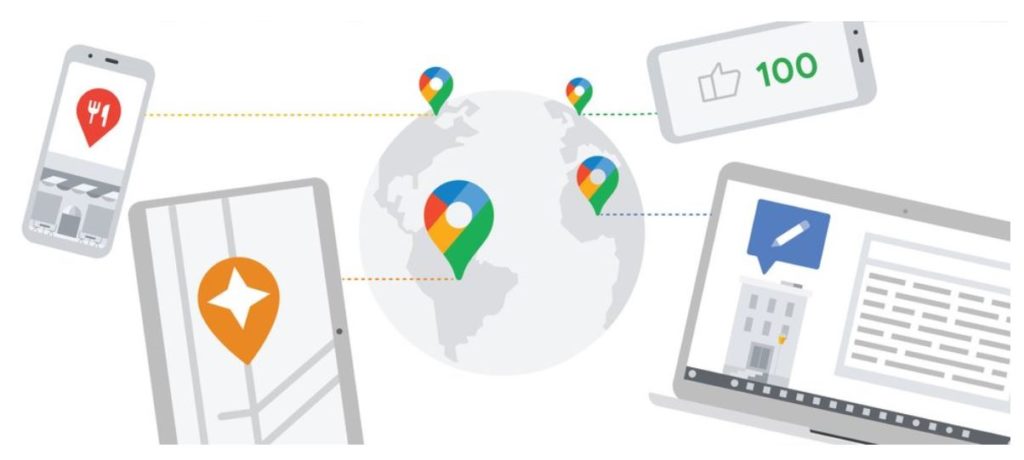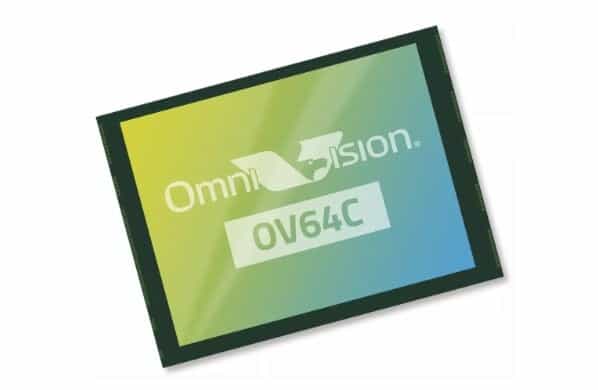
2-21: Huawei has officially announced that it will officially launch 5G phones using its own Huawei Mobile Service; HTC will launch its first 5G phone in 2020; etc.
Chipsets
Intel Labs, in collaboration with QuTech ‑ a partnership between TU Delft and TNO (Netherlands Organization for Applied Scientific Research) ‑ outlines key technical features of its new cryogenic quantum control chip “Horse Ridge”. The system-on-chip is based on Intel’s 22nm FinFET Low Power process and includes four radio frequency channels that can control a total of 128 qubits. (Engadget, Intel, Xinhuanet)
Intel is reportedly in talks to sell its home connectivity unit to MaxLinear. The Intel unit makes chips for DOCSIS modems and gateways and silicon for WiFi and smart home products. Intel has also shopped its home connectivity unit to others, including Qualcomm and MediaTek. Intel sold its smartphone modem business to Apple for USD1B. (CN Beta, Seeking Alpha, Light Reading, Bloomberg)
Samsung has announced its V1 facility in Hwaseong, Korea has begun mass production of its 6nm and 7nm chips based on the EUV (Extreme Ultraviolet) lithography process. Its EUV capacity under 7nm will triple by end of 2020 and current plans are to start shipping its 6nm- and 7nm mobile chips in 1Q20. (Samsung, AnandTech, CN Beta)
Alphabet’s Google unit is trying out artificial intelligence (AI) programs to advance its internal development of dedicated chips to accelerate its software, according to Google’s head of AI research, Jeff Dean. He has described the internal efforts as being in the early stages of understanding the utility of the technology. (CN Beta, ZDNet)
Touch Display
The mass production time of the Guangzhou OLED factory, which LG Display (LGD) has announced would begin to mass-produce in Aug 2019, has not set the date even in Feb 2020. Meanwhile, LGD’s panel supply has been only half of a level it originally planned. Although in 2019, 130,000 OLED glass plates should have been produced a month at the Paju plant in Korea (70,000 units per month) and the Guangzhou plant in China (60,000 units per month), actually, the actual production volume is standing at 70,000 units a month. (Laoyaoba, Business Korea)
Camera
OmniVision has announced the OV64C, its first 64MP image sensor featuring a 0.8µm pixel size to enable high resolution smartphone cameras in a 1/1.7” optical format. Built on OmniVision’s PureCel Plus stacked die technology, this sensor provides still image capture and exceptional 4K video performance with electronic image stabilization (EIS) for high end smartphones. (GizChina, OmniVision, PR Newsasia, IT Home, CN Beta)
Huawei P40 series may be equipped with a Sony IMX700 CMOS sensors. This sensor would have a resolution of 52MP. The sensor reportedly adopts a large 1/1.33 sensor area with support for 16MP binning technology (4×4). (Pocket-Lint, GizChina, My Drivers)
Biometrics
A German software company, called trinamiX has created a new piece of technology that scans and detects skin, and is able to distinguish between real skin and for example, plastic skin. Their technology, called Beam Profile Analysis, can differentiate between different materials, to determine whether it is living skin or a silicone mask, wood or plastic, among other options. (Phone Arena, trinamiX, East Day)
Sensory
A specially designed “smart” cosmetic contact lens developed by Shenzhen Institutes of Advanced Technology (SIAT) of the Chinese Academy of Sciences was found to have slowed real-time changes of moisture and pressure by altering colors, which can be potentially used for POC diagnosis of xerophthalmia and high intraocular pressure disease. (CN Beta, Science Mag, SIAT)
Apple’s patents propose 2 novel uses for fabric materials that have potential applications in future hardware and accessory designs, including a system for adjusting how tight a piece of fabric is at specific locations, and creating fabric domes that could be used as a switch. (Apple Insider, USPTO, USPTO)
University of Chicago has developed a wearable bracelet that jams the microphones in speakers, smartwatches, and smartphones alike. The wearable is crammed with 24 separate transducers that emit ultrasonic waves that interfere with microphones in all directions, even if they are hidden. (CN Beta, NY Times, University of Chicago, News Atlas)
University of Washington has created a wearable wristband and ring combination that can detect the precise location of the index finger, dubbed AuraRing. The system is also able to continuously track the location of someone’s index finger. The ring emits a signal that is picked up by the wristband and allows the identification of the position and orientation of the ring and the finger it is worn on. (CN Beta, University of Washington, SlashGear)
Battery
Tesla is working on a new ~110 kWh battery pack, its largest yet, and it should bring the range of some of its electric vehicles to more than 400 miles on a single charge. (CN Beta, Electrek, Teslarati)
Apple is reportedly one of a number of companies planning to adopt GaN technology in 2020. Its first GaN device is claimed to be a 65W fast charger that will use USB-C to top up MacBooks, iPads, and more. Samsung, Huawei, Xiaomi, and OPPO are also thought to be working on GaN chargers of their own. (CN Beta, Mac Rumors, Cult of Mac)
Material
Sun Changxu, a partner of the Xiaomi Industry Investment Department, has revealed that Xiaomi has not only invested in gallium nitride (GaN) enterprises, Wi-Fi 6 chip design companies, but also Guangdong-based Morion Nanotech, which is engaged in the production of graphene by chemical methods. (Laoyaoba)
STMicroelectronics and TSMC are collaborating to accelerate the development of gallium nitride (GaN) process technology and the supply of both discrete and integrated GaN devices to market. Through this collaboration, ST’s products will be manufactured using TSMC’s GaN process technology. (Laoyaoba, Digitimes, ST, Seeking Alpha)
Connectivity
Ryan Ding, Executive Director of the Board and President of Huawei‘s Carrier BG has revealed that Huawei has so far been awarded 91 commercial 5G contracts and shipped over 600,000 5G Massive MIMO Active Antenna Units (AAUs). According to GSA, as of the end of 2019, 62 operators in 34 countries around the world have officially announced 5G commercial use, and Huawei has supported 41 of them, accounting for two-thirds. (CN Beta, 36Kr, Xinhuanet, GizChina)
Ding Yun, Huawei executive director and president of operator BG, has unveiled ‘5G Partner Innovation Program’, which will invest USD20M in the next 5 years to support 5G innovative applications. (GizChina, Sina)
Phone
Google Cloud buys Cornerstone Technology of the Netherlands. The Dutch company will help Google Cloud move customers from mainframes to the cloud. Cornerstone brings “experience and innovative solutions to our portfolio of products and services that help customers modernize their infrastructure and applications”. (CN Beta, Google Cloud, CNBC, The Street)
Huawei has officially announced that it will officially launch 5G phones using its own Huawei Mobile Service (HMS) service, which is the first overseas Android phone to use non-GMS services. Huawei has also indicated that the number of developers in the HMS ecosystem has increased from the previous 910,000 to 1.3M. (CN Beta, Huawei, Tech Post)
According to Strategy Analytics, global 5G smartphone shipments will reach 199M units in 2020. Disruption caused by the coronavirus scare and global economic slowdown will put a cap on 5G smartphone sales in 2020. They forecast 5G penetration to rise from 1% of all smartphones shipped globally in 2019 to 15% of total in 2020. (Strategy Analytics, press, CN Beta)
TF Securities analyst Ming-chi Kuo believes Luxshare will be expanding its work for Apple to include iPhones, on top of its existing duties assembling the Apple Watch and AirPods. It is thought Luxshare could gain orders for iPhone case components, with a view to becoming a key supplier of the parts by mid to late 2021. (TF Securities, Laoyaoba, Apple Insider, Mac Rumors)
HTC new CEO Yves Maitre has revealed that HTC will launch its first 5G phone in 2020. HTC will actively deploy 5G in 2020, not only will launch its first 5G mobile phone, but also continue to invest in virtual reality (VR) applications. (My Drivers, LTN, UDN, Fortune)
realme C3, new variant, is launched in Thailand – 6.5” 1600×720 HD+ IPS, MediaTek Helio G70, rear tri 12MP-2MP depth-2MP macro + front 5MP, 2+32 / 3+32 / 4+64GB, Android 10.0, rear fingerprint scanner, THB3,999 (USD130) for 3+32GB. (GSM Arena, realme)
Sony Xperia L4 is announced – 6.2” 720×1680 21:9 HD+ IPS, MediaTek Helio P22 MT6762, rear tri 13MP-5MP ultrawide-2MP depth + front 8MP, 3+64GB, Android 9.0, side fingerprint scanner, 3580mAh. (GSM Arena, CN Beta)
Tecno Camon 15 and 15 Pro are launched in India, powered by MediaTek Helio P35: Camon 15 – 6.55” HD+ Dot-in display, rear quad 48MP main + front 16MP, 4+64GB, Android 10.0, rear fingerprint scanner, 5000mAh, INR9,999 (USD140). Camon 15 Pro – 653” FHD+ RearfullView, rear quad 48MP main + front 32MP pop-up, 6+128GB, Android 10.0, rear fingerprint scanner, 4000mAh, INR14,999 (USD210). (Gizmo China, Tecno, Tecno)
Augmented / Virtual Reality
HTC has announced 3 new Cosmos VR products: Cosmos Play – It is developed for entry-level users, equipped with 4 lenses and Inside-out tracking technology, which focuses on a relatively low price and comfortable wearing experience. It costs USD499. Cosmos XR – It plans to combine AR and VR. In addition to the four Cosmos-based lenses, two additional high-resolution perspective lenses are installed. It costs USD699. Cosmos Elite – It is developed for games with high accuracy requirements, supporting Lighthouse laser positioning technology. The package includes a Cosmos headset with an integrated external tracking panel, a pair of SteamVR locators and a pair of VIVE controllers for USD899. (CN Beta, Engadget, Pocket-Lint, Upload VR)
HTC is testing a more streamlined mixed reality (XR) device codenamed “Project Proton”. The company is revealing two different visions for the product: one that is fully self-contained “Proton AIO” and one that offloads some components to a wired external pack “Proton Glass”. (The Verge, TechCrunch, Engadget, Sina)
Automotive
Zero Motocycles has announced a new all-electric motorcycle called the SR/S. The SR/S can reach a top speed of 124 miles per hour, has a range of up to 200 miles (when using the optional range-extending battery “tank”), and has 110 horsepower at the flick of the wrist. (The Verge, CEO Magazine)
Artificial Intelligence
SentinelOne — which provides a machine learning-based solution for monitoring and securing laptops, phones, containerized applications and the many other devices and services connected to a network — has picked up USD200M, a Series E round of funding that it says catapults its valuation to USD1.1B. (TechCrunch, Calcalistech)
Google is using AI and machine learning to spot malicious contributions at submission time, ensuring they do not reach the over 1B users who regularly use Maps. Google uses automated detection systems, including machine learning models, to scan millions of contributions to detect and remove policy-violating content. (VentureBeat, Google)
